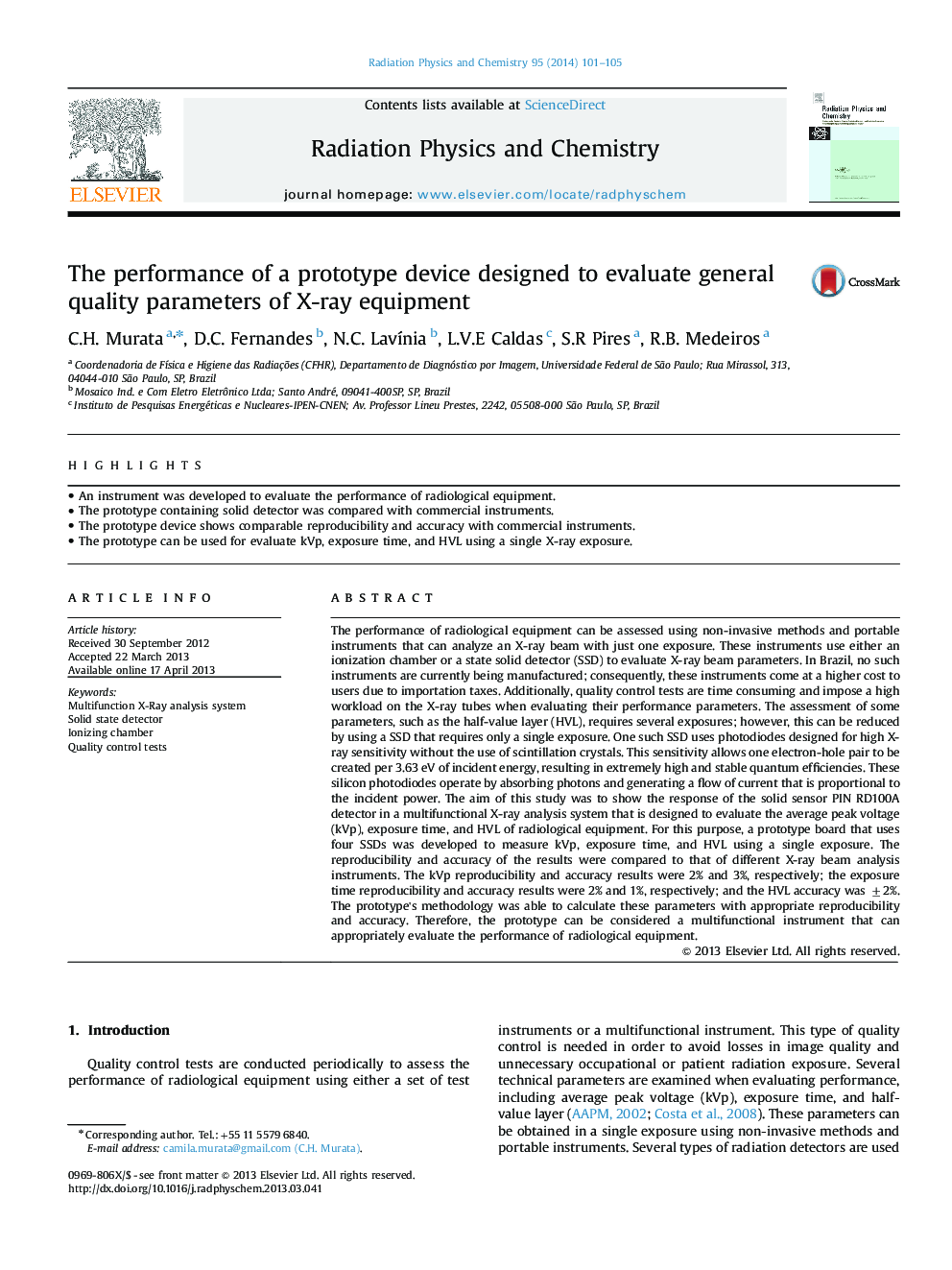| Article ID | Journal | Published Year | Pages | File Type |
|---|---|---|---|---|
| 1882409 | Radiation Physics and Chemistry | 2014 | 5 Pages |
•An instrument was developed to evaluate the performance of radiological equipment.•The prototype containing solid detector was compared with commercial instruments.•The prototype device shows comparable reproducibility and accuracy with commercial instruments.•The prototype can be used for evaluate kVp, exposure time, and HVL using a single X-ray exposure.
The performance of radiological equipment can be assessed using non-invasive methods and portable instruments that can analyze an X-ray beam with just one exposure. These instruments use either an ionization chamber or a state solid detector (SSD) to evaluate X-ray beam parameters. In Brazil, no such instruments are currently being manufactured; consequently, these instruments come at a higher cost to users due to importation taxes. Additionally, quality control tests are time consuming and impose a high workload on the X-ray tubes when evaluating their performance parameters. The assessment of some parameters, such as the half-value layer (HVL), requires several exposures; however, this can be reduced by using a SSD that requires only a single exposure. One such SSD uses photodiodes designed for high X-ray sensitivity without the use of scintillation crystals. This sensitivity allows one electron-hole pair to be created per 3.63 eV of incident energy, resulting in extremely high and stable quantum efficiencies. These silicon photodiodes operate by absorbing photons and generating a flow of current that is proportional to the incident power. The aim of this study was to show the response of the solid sensor PIN RD100A detector in a multifunctional X-ray analysis system that is designed to evaluate the average peak voltage (kVp), exposure time, and HVL of radiological equipment. For this purpose, a prototype board that uses four SSDs was developed to measure kVp, exposure time, and HVL using a single exposure. The reproducibility and accuracy of the results were compared to that of different X-ray beam analysis instruments. The kVp reproducibility and accuracy results were 2% and 3%, respectively; the exposure time reproducibility and accuracy results were 2% and 1%, respectively; and the HVL accuracy was ±2%. The prototype's methodology was able to calculate these parameters with appropriate reproducibility and accuracy. Therefore, the prototype can be considered a multifunctional instrument that can appropriately evaluate the performance of radiological equipment.
